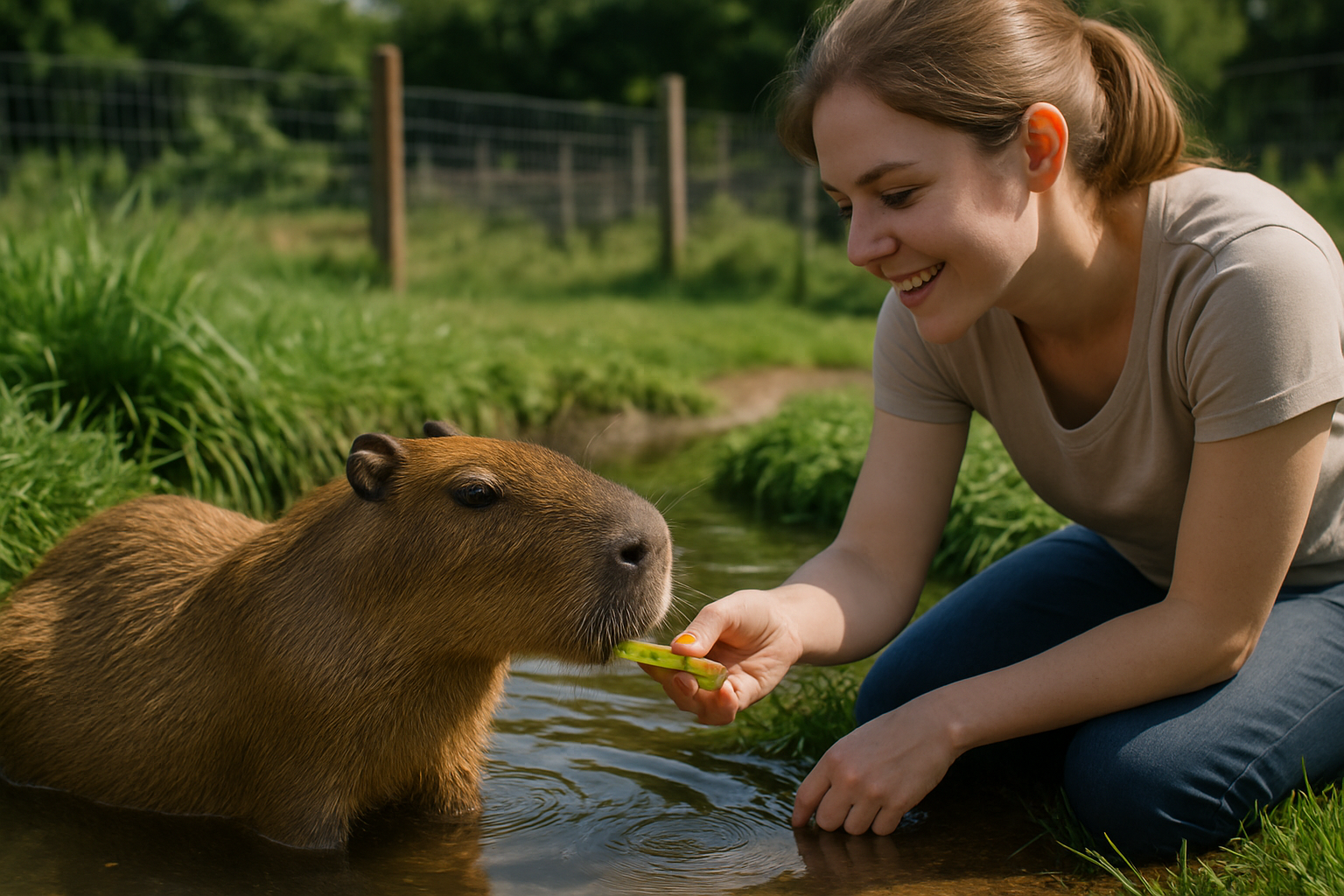The Enigmatic World of Capybara Companionship
In the realm of unconventional pets, one gentle giant has been making waves and capturing hearts: the capybara. These oversized rodents, native to South America, have become increasingly popular as exotic companions, sparking curiosity and admiration worldwide. But what makes these semi-aquatic mammals such intriguing pets, and what does it take to care for them?

A Brief History of Capybara Domestication
Capybaras have a long history of interaction with humans, dating back to indigenous South American cultures. These societies viewed capybaras not only as a food source but also as sacred animals in some cases. However, the concept of keeping capybaras as pets is a relatively recent phenomenon, emerging in the late 20th century.
Initially, capybaras were primarily kept in zoos and wildlife sanctuaries. As people became more familiar with their docile nature and social behavior, interest in private ownership began to grow. The first documented cases of capybaras as household pets appeared in the 1980s, primarily in South American countries where the animals are native.
Legal Considerations and Ethical Concerns
The legality of owning a capybara varies greatly depending on location. In many countries and U.S. states, capybara ownership is strictly regulated or outright prohibited due to concerns about exotic pet trade and potential ecological impacts if released into non-native environments.
For those considering capybara companionship, it’s crucial to research local laws and obtain necessary permits. Ethical considerations also come into play, as capybaras have specific needs that can be challenging to meet in a domestic setting. Potential owners must carefully evaluate their ability to provide appropriate care and living conditions.
The Capybara Lifestyle: What to Expect
Capybaras are highly social animals that thrive in groups in the wild. As pets, they require significant space, including both land and water areas. A large, securely fenced yard with a pool or pond is essential for their well-being. These semi-aquatic creatures spend much of their time in water, which aids in temperature regulation and skin health.
Diet is another crucial aspect of capybara care. In the wild, they are herbivores, grazing on grasses and aquatic plants. As pets, their diet should consist of high-quality grass hay, fresh vegetables, and specially formulated pellets. It’s important to note that capybaras have continuously growing teeth, necessitating a diet that promotes natural wear.
Social Needs and Behavioral Traits
One of the most endearing qualities of capybaras is their social nature. In captivity, they can form strong bonds with their human caregivers and other pets. However, it’s important to remember that they are herd animals and may become stressed or depressed if kept alone. Many capybara owners opt to keep at least a pair to fulfill their social needs.
Capybaras are generally gentle and can be quite affectionate, often enjoying physical contact and grooming from their human companions. They are also known for their vocalizations, which range from whistles and barks to purrs, adding a unique auditory element to the household.
Health Considerations and Veterinary Care
Keeping a capybara healthy requires specialized knowledge and access to exotic animal veterinarians. Regular check-ups are essential, as capybaras can be prone to certain health issues such as dental problems, parasites, and skin conditions if not properly cared for.
Preventative care, including vaccinations and parasite control, is crucial. Capybaras also require regular nail trims and may need dental care to prevent overgrowth of their continuously growing teeth. Finding a veterinarian experienced in capybara care can be challenging and potentially costly, factors that prospective owners must consider.
Environmental Impact and Conservation
While capybaras are not currently endangered in the wild, their increasing popularity as pets raises questions about the impact on wild populations. Responsible ownership includes ensuring that pets are obtained from reputable breeders rather than captured from the wild.
Moreover, capybara owners have a unique opportunity to educate others about these fascinating creatures and their natural habitats. Many capybara owners become advocates for conservation efforts in South America, where deforestation and habitat loss threaten native wildlife.
The Cost of Capybara Companionship
Owning a capybara is a significant financial commitment. The initial purchase price can range from $1,000 to $3,000 or more, depending on the source and location. However, this is just the beginning of the investment.
Setting up an appropriate habitat, including fencing, shelter, and a water feature, can cost several thousand dollars. Ongoing expenses include specialized food, veterinary care, and potential property modifications to accommodate these large rodents. Prospective owners should budget for annual costs that can easily exceed $2,000 to $3,000 per year.
The Future of Capybara Pet Ownership
As interest in exotic pets continues to grow, the trend of capybara ownership is likely to evolve. This may lead to increased regulation, specialized breeding programs, and advancements in capybara-specific veterinary care.
However, it’s crucial to approach capybara ownership with careful consideration. While these charismatic creatures can make wonderful companions for those prepared to meet their needs, they are not suitable for everyone. As with any exotic pet, potential owners must be committed to providing lifelong care and creating an environment that allows these remarkable animals to thrive.
In conclusion, the world of capybara companionship is as complex as it is fascinating. These gentle giants offer a unique pet experience, but one that comes with significant responsibilities. As interest grows, it’s essential that education, ethical considerations, and proper care remain at the forefront of the capybara pet phenomenon.





